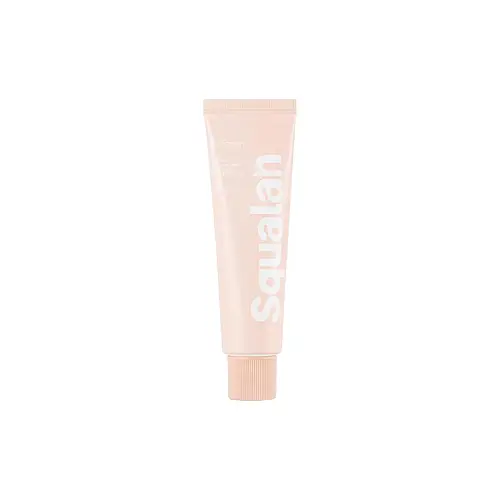Vegreen 730 Daily Moisture Cream Versus Beauty of Joseon Dynasty Cream
Updated on April 24, 2025
Overview
What they are
These products are both cruelty-free and reef safe . They have a total of 5 ingredients in common
Suited For
They're both likely to be good for dry skin, brightening skin and scar healing
Free From
They both do not contain any harsh alcohols, common allergens, parabens, silicones or sulfates
We independently verify ingredients, and our claims are backed by peer-reviewed research. Spot a product that needs an update? Let us know.
Ingredient Info
Vegreen 730 Daily Moisture Cream 11 ingredients
Beauty of Joseon Dynasty Cream 37 ingredients
About this product
About this product
At a glance
Click on any of the items below to learn more
Vegreen 730 Daily Moisture Cream 11 ingredients
Beauty of Joseon Dynasty Cream 37 ingredients
Benefits
Key Ingredients
Benefits
Concerns
Ingredients Side-by-side
Ingredients Explained
These ingredients are found in both products.
Ingredients higher up in an ingredient list are typically present in a larger amount.
Water. It's the most common cosmetic ingredient of all. You'll usually see it at the top of ingredient lists, meaning that it makes up the largest part of the product.
So why is it so popular? Water most often acts as a solvent - this means that it helps dissolve other ingredients into the formulation.
You'll also recognize water as that liquid we all need to stay alive. If you see this, drink a glass of water. Stay hydrated!
Learn more about WaterThis ingredient is an emollient, solvent, and texture enhancer. It is considered a skin-softener by helping the skin prevent moisture loss.
It helps thicken a product's formula and makes it easier to spread by dissolving clumping compounds.
Caprylic Triglyceride is made by combining glycerin with coconut oil, forming a clear liquid.
While there is an assumption Caprylic Triglyceride can clog pores due to it being derived from coconut oil, there is no research supporting this.
Learn more about Caprylic/Capric TriglycerideGlycerin is already naturally found in your skin. It helps moisturize and protect your skin.
A study from 2016 found glycerin to be more effective as a humectant than AHAs and hyaluronic acid.
As a humectant, it helps the skin stay hydrated by pulling moisture to your skin. The low molecular weight of glycerin allows it to pull moisture into the deeper layers of your skin.
Hydrated skin improves your skin barrier; Your skin barrier helps protect against irritants and bacteria.
Glycerin has also been found to have antimicrobial and antiviral properties. Due to these properties, glycerin is often used in wound and burn treatments.
In cosmetics, glycerin is usually derived from plants such as soybean or palm. However, it can also be sourced from animals, such as tallow or animal fat.
This ingredient is organic, colorless, odorless, and non-toxic.
Glycerin is the name for this ingredient in American English. British English uses Glycerol/Glycerine.
Learn more about GlycerinSqualane is an emollient that helps the skin hold onto moisture. It's an oily liquid that occurs naturally in certain types of fish and plant oils.
Because squalane boosts hydration in the skin, it also comes with plenty of benefits: it is an antioxidant and can help fight free radicals and skin damage. Squalane is also found to have a detoxifying effect when applied.
Squalane comes from squalene, which occurs naturally within the sebum of our skin. It is one of the oils our skin produces to keep itself hydrated. Squalane is the hydrogenated version of squalene and has a longer shelf life.
Research shows that squalane is non-irritating (even at 100% concentration).
In general, it's a fantastic ingredient. It does a great job at hydrating the skin, and it's suitable for those with sensitive skin.
The source of squalane may impact malassezia / fungal acne. This is because olive oil derived squalane can contain impurities such as fatty acids and plant waxes. Sugarcane derived squalane is recommended for anyone with malassezia concerns.
Is squalane vegan?
This depends on the source. Squalane can be derived from both plants and animals. Most squalane used in skincare comes from plants.
Please note: the source of squalane is only known if disclosed by the brand. We recommend reaching out to the brand if you have any questions about their squalane.
Read more about squalene with an "e".
Learn more about Squalane1,2-Hexanediol is a synthetic liquid and another multi-functional powerhouse.
It is a:
- Humectant, drawing moisture into the skin
- Emollient, helping to soften skin
- Solvent, dispersing and stabilizing formulas
- Preservative booster, enhancing the antimicrobial activity of other preservatives
Ingredient Ratings
Here's what our community thinks of the ingredients in these products.
When to use
Vegreen 730 Daily Moisture Cream 11 ingredients
Beauty of Joseon Dynasty Cream 37 ingredients

Reviews
Here's what our community thinks
Vegreen 730 Daily Moisture Cream 11 ingredients
Holy Grail
This comes out of the bottle looking like a cream but kinda turns into water on the skin. It absorbs so well and is perfect for those that hate feeling like there's a layer left on the skin. The miminal ingredient list is a lifesaver for hypersensitive skin. After trying 15+ moisturizers looking for something that didn't burn, itch, or break me out, I finally found this. Only skincare Show more
Beauty of Joseon Dynasty Cream 37 ingredients
Not oily skin friendly
Pros: elegant and beautiful consistency, lightweight, super powerful brightner (it really did made impact on my face acne scars). Cons: weird formulation with very little humectants and a lot of emolients. Not only my skin did not feel hydrated enough, I ended up with a very sticky oily film all over my face. The brightening abilities sometimes were too agressive, I could Show more
has coconut oil! clogged my pores and made me break out like crazy which is sad because the consistency is really nice and smooth.

